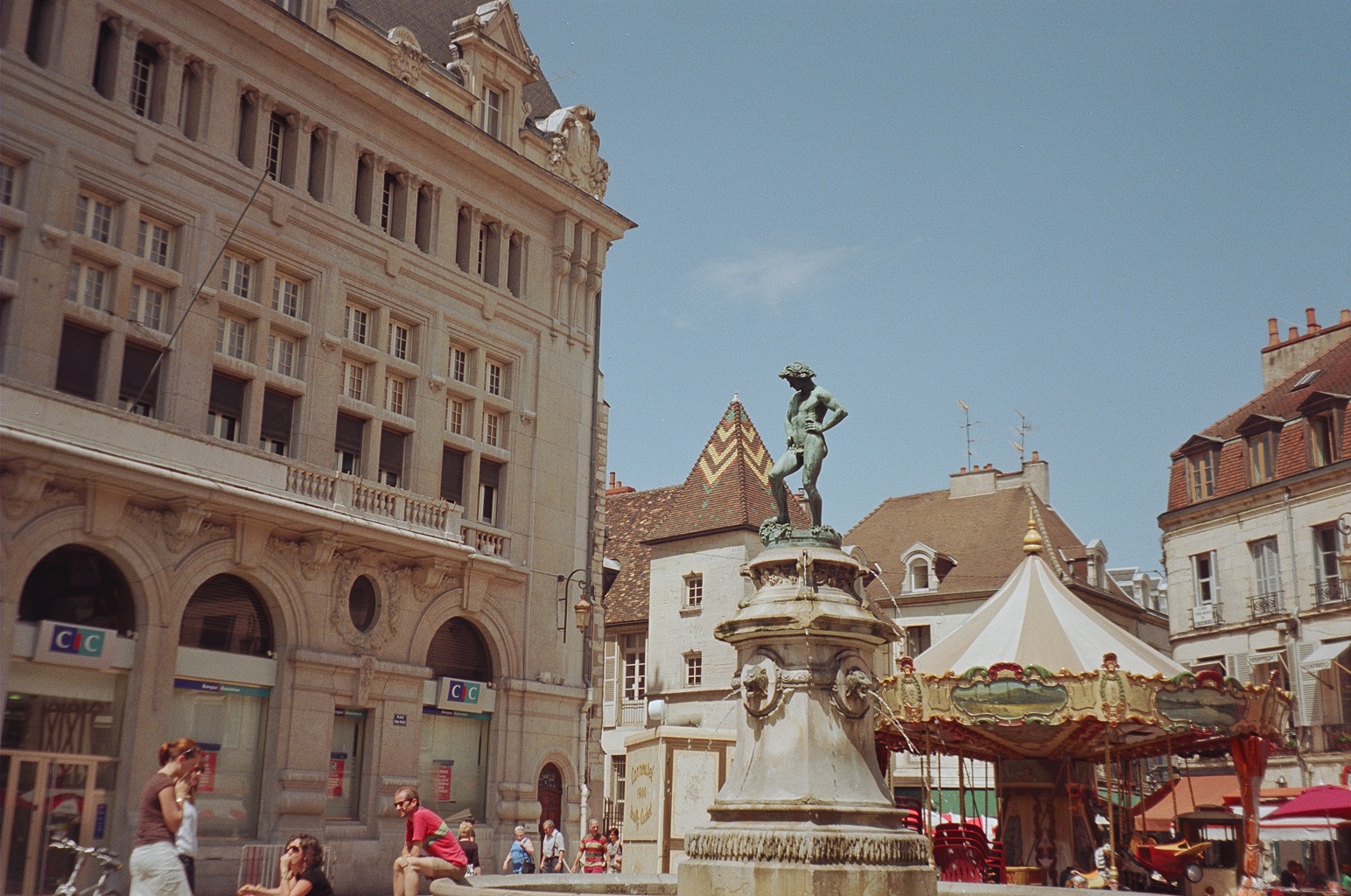
The train trip from Paris to Dijon was pleasant enough. The train took about an hour and a half. It was a short walk from the station to the center of town, where I stayed at an Ibis hotel. (For those who are unfamiliar with European chains, this is the moral equivalent of a Motel 6. You get a clean but basic room at a good price.) I got lunch, stopped by the tourist office for maps, and bought a train ticket to Beaune for the next day, which had some schedule complications due to a rail strike reducing the number of trains. Then I set out to do some sightseeing.
The main square of Dijon is Place Francois Rude. It's a pleasant place, lined with cafes. The better restaurants are around the nearby market square, and I will particularly note an excellent dinner of salad, gazpacho, and fresh strawberries with homemade marshmallows at a wine bar called l'O.

Overall, Dijon is a city with a lot of grand architecture, particularly in the form of churches, with a few theatres and the ducal palace thrown in. Notre Dame and St. Michel are the most famous churches. I didn't get any great photos of either of those, however. I will mention that I thought the exteriors of both were more attractive than the interiors. I got a better photo of St. Philibert, but did not even look at the interior.
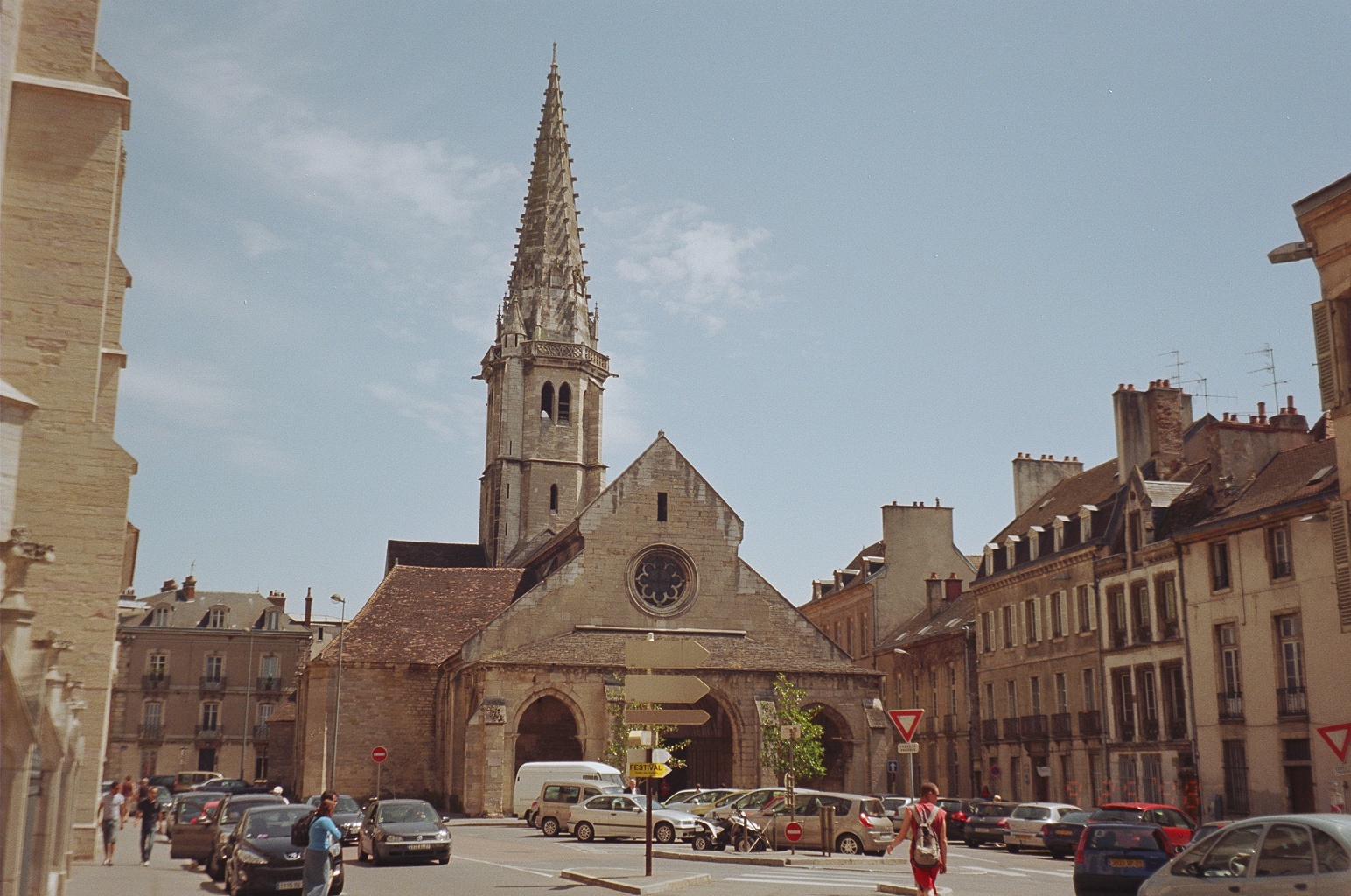
The Church of St. Anne, which houses the Museum of Sacred Art, also had an attractive exterior. The museum was closed, alas, so I cannot say anything about the interior.
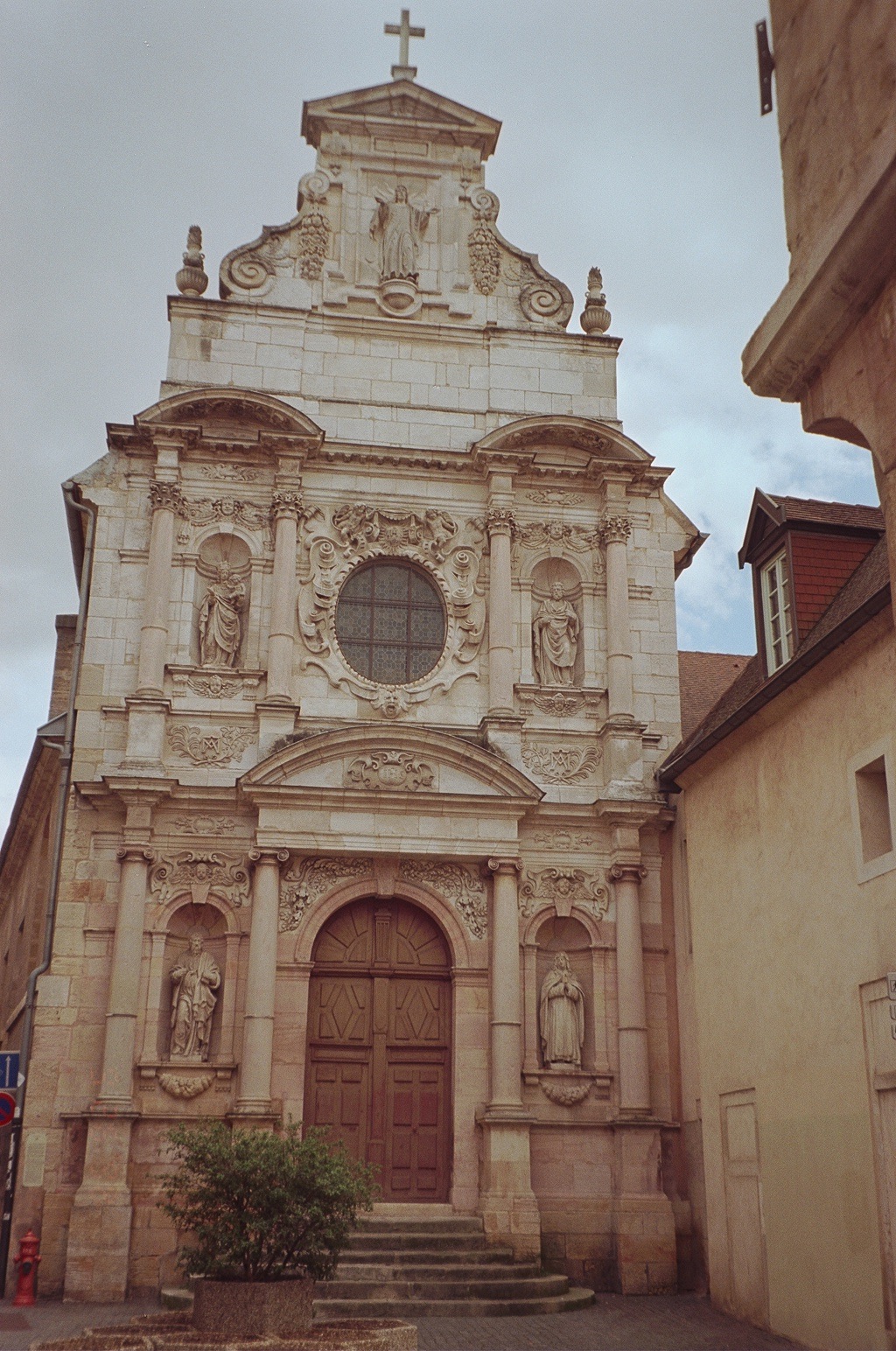
There are several museums in Dijon and my top priority was the Museum of Archaeology. While the signage is only in French, I was able to get the gist of it. The upper level has neolithic items, primarily tools. Things move on to the Roman invasion and the Merovingian dynasty, with various statues of gods and explanations of the replacement of Celtic gods with Roman ones. The middle floor focuses on the abbeys of the Middle Ages, with various columns and statues. The figures of saints are particularly notable and the fan vaulting of the room is also quite impressive. But the best part of the museum is the cellar of what had been the abbey of the Source of the Seine. There's an exquisite statue of the goddess Sequana, various figures that are alleged to show maladies of different parts of the body, and the impressive scriptorium, with its collection of funeral stelae. All in all, this was well worth an hour and a half.
On the advice of some folks from Flyer Talk I took a day trip to Beaune. This is a walled city and is the heart of the Burgundy wine region. It's a very charming town overall.
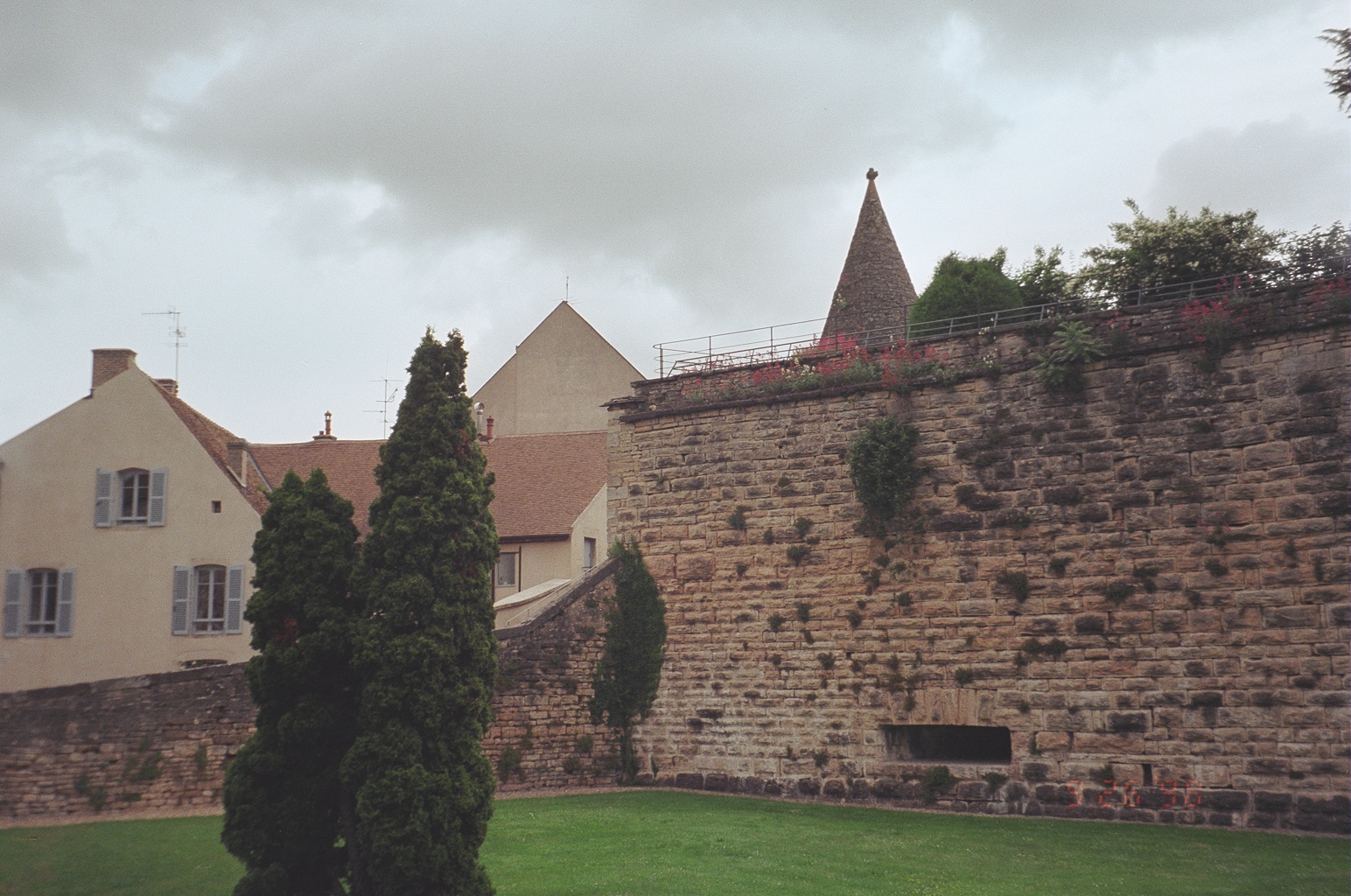
One of the highlights of Beaune was the church of Notre Dame.
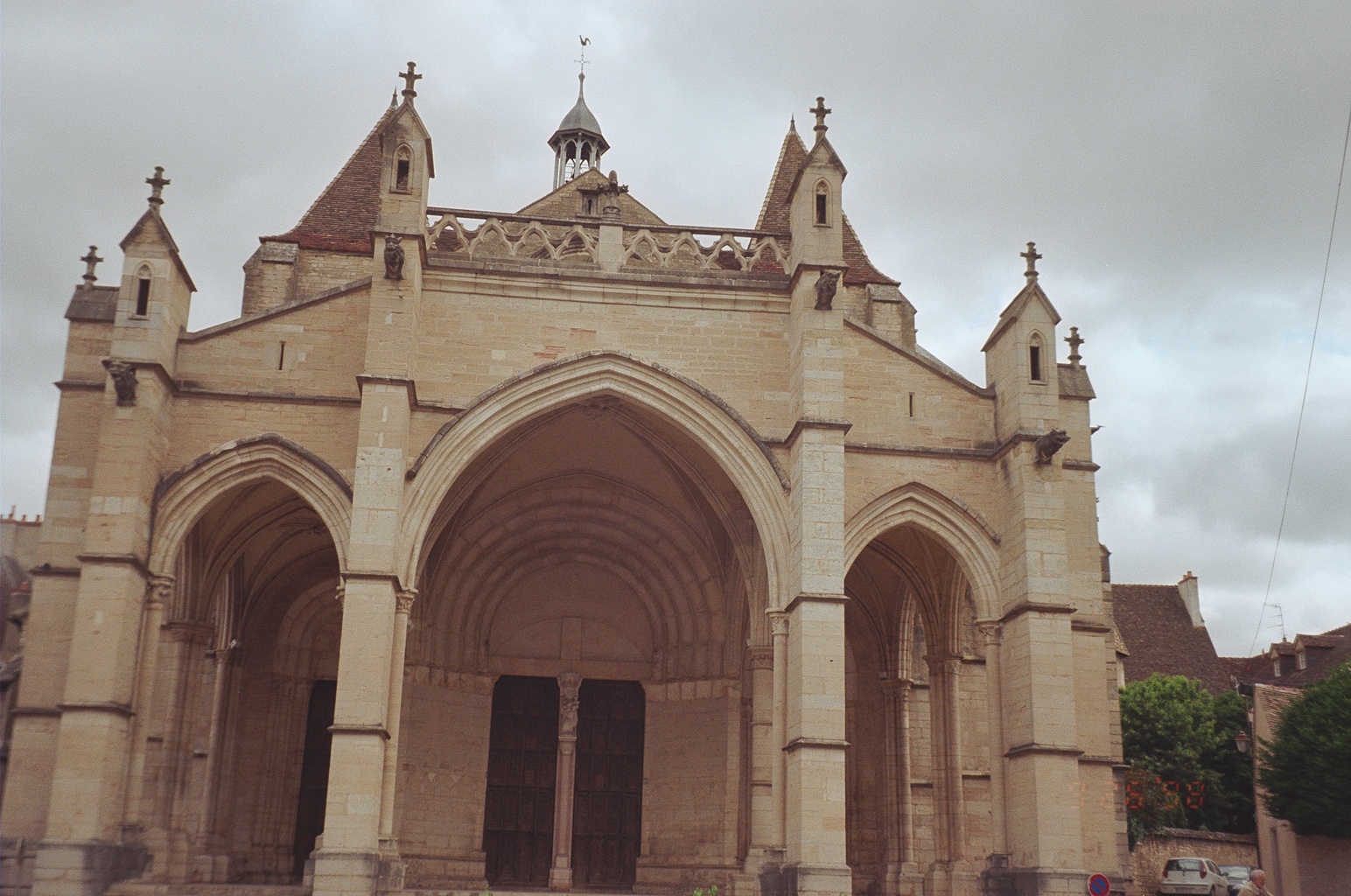
The interior has a famous and beautiful set of tapestries, telling the story of Mary's life. In addition, there is some lovely stained glass.
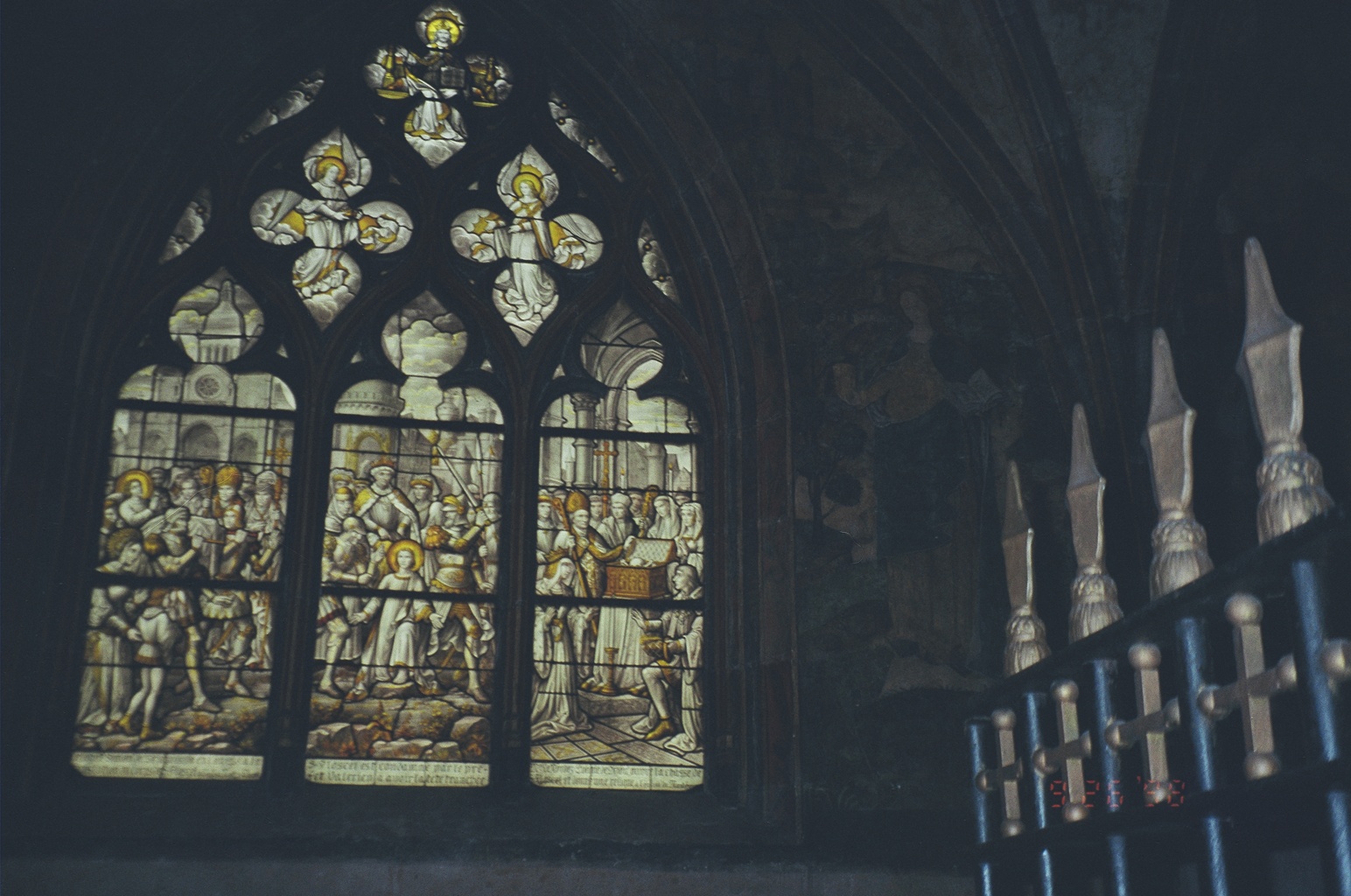
You can't really go to Burgundy and not at least think about wine. So I felt somewhat obliged to visit the Musee de Vin. On the plus side, the museum has English translations of most of its explanatory material. But I don't think I learned anything I hadn't already known about winemaking and it was pricy at EUR 5.50. That made me balk at the EUR 6 to visit the Hotel-Dieu de Beaune, a former almshouse that is now a museum. I've been told that was a mistake, as it is considered one of the finest examples of French 15th century architecture and has some excellent art work. So it would probably have been a better investment of my time in Beaune and my money than the wine museum was. A train strike had reduced the transit schedules and I was heading on late that evening, so my time was particularly limited. Money is, of course, always limited.
There was one other thing I had to do in Dijon before leaving the area. Four small jars of mustard (small enough to meet the carry-on limitations of air travel) found their way into my luggage. With that essential errand accomplished, I was off to Switzerland.
[Back to Previous Chapter | Back to Index | On to Next Chapter ]
last updated 30 January 2011